This is a Konica Z-Up 80RC Limited, a fully automatic “bridge” camera made by Konica of Japan starting in 1989. This camera was the top model in Konica’s long line of Z-Up cameras all featuring zoom lenses in fully featured point and shoot cameras. There were several variants of the Konica Z-Up 80, this one being the “RC” model which added a detachable infrared remote control for remote shutter release, and the Limited model with date back and more exposure modes. Although many of this camera’s features are gimmicky by today’s standards, the camera does have a lot of useful features, a good lens, wide range of shutter speeds, and an excellent metering system, making it a very capable camera both then and now.
Film Type: 135 (35mm)
Lens: 40mm – 80mm Zoom f/3.8 – f/7.2 Konica coated 8-elements in 7-groups
Focus: 0.6m (2 feet) to Infinity, Infrared Active Auto Focus with Focus Lock
Viewfinder: Bright Frame Zoom Viewfinder with Zone Focus Lamp and Parallax Marks
Shutter: Electromagnetic Between the Lens Shutter
Speeds: 1 – 1/500 seconds, step less
Exposure Meter: Silicon Photo Diode w/ Programmed AE, Center Weighted, +1.5 EV and Backlight Compensation
Battery: 6v 2CR5 Lithium Battery
Flash Mount: Pop Up Flash, Flash Sync at All Speeds
Other Features: Self-Timer, Infrared Remote Control, Date Back, LCD Display, Multi-Exposure Mode, DX Film Detection
Weight: 485 grams (w/ battery)
Manual: https://www.cameramanuals.org/konica/konica_z-up_80rc_limited.pdf
How these ratings work |
On the surface, the Konica Z-Up 80RC Limited is much like any other fully automatic point and shoot camera from the late 1980s. But once you get a chance to handle one, the camera’s excellent ergonomics, long list of features, and capable lens really put it above just another 80s point and shoot. The Konica Z-Up 80RC Limited isn’t perfect, but for the era in which this model was made, this was a heck of a camera that is still a capable shooter today, which in my opinion, makes it a worthwhile option for the film shooter/collector today. | ||||||
| Images | Handling | Features | Viewfinder | Feel & Beauty | History | Age | |
| 1 | 2 | 2 | 2 | 1 | 1 | 0% | |
| Bonus | +1 for the complete package, this might be one of my favorite 1980s point and shoots | ||||||
| Final Score | 10.0 | ||||||
History
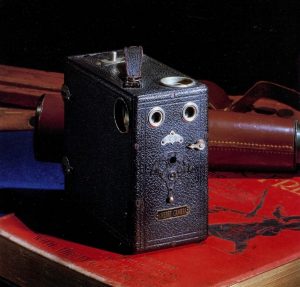
If Konica still existed today, it would be able to say it was Japan’s oldest camera company. First formed as Konishi Honten in 1878 by a pharmacy salesman named Sugiura Rokusaburo, the original version of Konica’s first photographic products were development chemicals and other goods, which they sold to local photographers. This eventually led to the creation of the Cherry Hand Camera in 1903, which was Japan’s first consumer camera.
Over the next 2 decades, Konishi Honten did very well, and in 1921 the company was renamed G.K. Konishiroku Honten. The company continued to be successful throughout the 20s, releasing several other lines of cameras and even founded the Konishi College of Photography in 1923. In 1931, the company released the first ever commercially available Japanese camera lens, known as the Hexar.
Between the years of 1936 and 1943, as Japan became increasingly involved in World War II, the company’s business became reorganized and the name changed several times. At one point their entire retail and wholesale business was stopped.
After the war, Konishiroku Honten hoped to expand their sales outside of Japan, so their name was changed once again to incorporate English, and now they were known as Konishiroku Photo Industry Co., Ltd. In 1947, the company released a clone of the German Leica camera and gave it the name “Konica”.
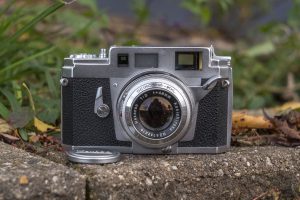
Over the course of the next few decades, Konishiroku would change it’s name once again, to Konica, the name of it’s most popular and well known brand. The Konica II and III rangefinders were two of the best 35mm rangefinders in the 1950s, and still are highly valued by collectors today. Their line of Hexar lenses enjoyed a very positive reputation among photographers all over the world.
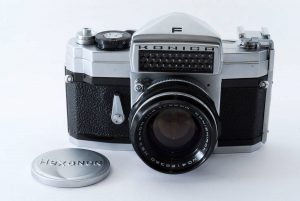
Konica would make waves in 1960 with the release of the company’s first Single Lens Reflex camera, the Konica F. Featuring a combination of features not found on any other camera at the time, including a moving film plane, an early version of the Copal Square vertically traveling shutter, a top 1/2000 shutter speed, and cross-coupled selenium exposure meter, the Konica F was the world’s most advanced SLR, except it was also extremely expensive and sold poorly.
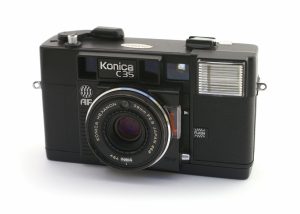
Over the next couple of decades, Konica would continually prove themselves to be pioneers of new technology, often including features not found in other cameras at the time. Cameras like the Konica Auto-Reflex from 1966 was the first (and only) 35mm SLR with the ability to shoot both full and half frame shots, the Konica Auto S3 was the most advanced compact 35mm rangefinder when it was released in 1973, and the Konica C35 AF was the world’s first auto focus camera when it was released in 1977 and featured a design that was copied by many other manufacturers over the next decade.
As the 1970s came to a close, Konica found themselves falling farther and farther behind in the professional and advanced amateur market. They had discontinued their 35mm rangefinder offerings and their 35mm SLRs were selling slowing.
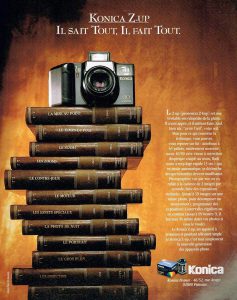
In the 1980s, Konica focused its energy on the compact point and shoot market with a dizzying array of new models, many of which had similar specifications to other models the company also offered. Some time in the late 1980s, the Konica introduced a new lineup of cameras equipped with fully automatic zoom lenses which they called the “Z-Up Series”. According to camera-wiki, there were at least 15 models in this series, but I am certain there are more, probably a lot more as many were sold only in Japan and not in the United States.
In 1988, the top of the line Z-Up model was the Konica Z-Up 80 Zoom, an attractive and well equipped model with a 2x 40-80mm zoom, in body flash, date back, a fast 1/500 shutter speed, and the company’s advanced auto focus and auto exposure systems.
Although I’ve never found sales numbers, the Konica Z-Up 80 Super Zoom had to have done well for the company as they revised it several times, all sharing the same basic body and lens, but tweaking the specs. In 1989, a version of the camera with a removable remote control called the Konica Z-Up 80RC. In addition to the remote, this model added other features like an infinity lock switch on the front of the camera and a metal door covering some of the lesser used buttons on the cameras back.
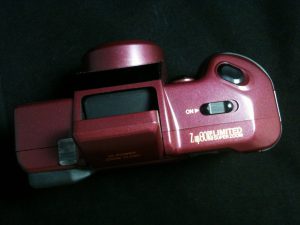
Also around this time a version called the Konica Z-Up 80RC Limited appeared whose only difference seems to be the color of the camera. Most versions of the Limited have a sparkly black pearl finish, but there were also some in a dark red pearl finish. Whether or not the red version was some sort of commemorative edition or a special release in a specific country is not clear. I’ve scoured over endless photos of Limited and non-Limited models on eBay and the Internet and there does not appear to be any other difference.
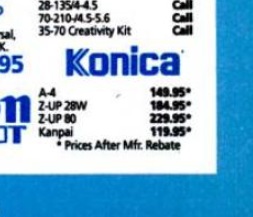 While the Konica Z-Up 80RC Limited wasn’t the most advanced point and shoot model out there, it was definitely one of the most ambitious point and shoot models with a suggested retail price of $509. Actual dealer prices were much lower however, as the ad to the left for Adorama Camera from August 1990 shows a price of $229.95 after a manufacturer’s rebate. These prices when adjusted for inflation compare to $1075 and $490 today.
While the Konica Z-Up 80RC Limited wasn’t the most advanced point and shoot model out there, it was definitely one of the most ambitious point and shoot models with a suggested retail price of $509. Actual dealer prices were much lower however, as the ad to the left for Adorama Camera from August 1990 shows a price of $229.95 after a manufacturer’s rebate. These prices when adjusted for inflation compare to $1075 and $490 today.
I have no idea how long the Konica Z-Up 80RC Limited or any of its variants was offered for sale, but my guess is the quick pace of new models at this time probably gave it a 2 year shelf life before it was replaced by the next best thing.
In the late 1990s, Konica’s financial struggles would continue to worsen and by 2003, would cause the company to merge with Minolta, another Japanese camera maker who was also struggling. The thought was that by joining forces and forming the Konica-Minolta corporation, the combined assets and expertise from both companies would return each to profitability. Sadly, this merger could not have come at a worse time, as by 2003, the rise of digital photography was already underway, and the newly formed Konica-Minolta corporation was not prepared to compete in this new market.
By 2006, Konica-Minolta would exit the photography business altogether, selling its patents and technology to Sony. The remainder of the company would continue on making printers, copiers, and other office equipment.
Today, there are a huge number of 35mm point and shoot cameras from the era in which the Konica Z-Up 80RC Limited was made, and most of them just blend together. These were consumer products, meant to be used for a short while and thrown away. Collectors rarely, if ever show any interest in cameras like these, but on occasion, you come across a model with just enough distinctiveness, with the right amount of features, and with a good lens, it is worth taking a look at, and this is that camera. I don’t suspect anything I say here will cause a run on Konica Z-Up 80RC Limiteds on eBay, but if you come across one and are looking for something just a little different, I highly encourage you to give it a shot!
My Thoughts
In April 2016, I reviewed the Konica AiBORG, which at the time, I gave it the lowest rating of any camera I had reviewed to that point. I called it the worst camera I had ever used because of illogical placement of controls, horrible ergonomics, and an extremely small viewfinder that for a camera made in the 1990s was inexcusably small.
In the nearly six years since I wrote that review, you would assume that with the number of cameras I’ve come across, I would have found a camera I hated more and you’d be wrong. Sure, there have certainly been worse cameras, such as the “Scamera” Canon DL-9000 or those cheap promotional Time Magazine cameras, but I consider those to be toys, and not serious attempts at a camera like the AiBORG was.
Konica took the AiBORG seriously, giving it a suggested retail price over $500 and announcing it in a November 1991 issue of the New York Times, but they clearly missed the mark, by a LOT!
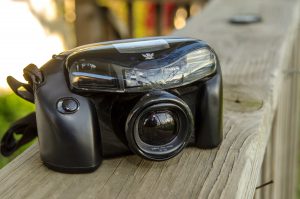
Fast forward to 2021 and with regular mention of the AiBORG being my least favorite camera, I started to wonder if maybe I should give it another chance. Maybe with my years of experience reviewing cameras, I might see something new in it with a second look. But then I came across a Konica Z-Up 80RC Limited and noticed it’s similar automatic lens cap feature, and strong curves, almost like a scaled down AiBORG and I thought what the hell, and picked it up for the low low price of only $10!
This particular camera arrived in it’s original box with paperwork and strap showing very little signs of use. If this camera ever was used, it was probably only once or twice as it looked brand new. I was pleased to see that some previous owner thought to remove the batteries before storing it as the compartment was empty and clean.
Holding the Konica Z-Up 80RC Limited, you will never mistake the body for being anything other than plastic. The only metal on the camera is a small door on the back which covers some of the lesser used buttons. Other than a grippy rubber material on the hand grip and around the eyepiece, the body is made of a hard plastic with this being the Limited version of this camera, is covered in some kind of sparkly pearl finish that glistens as light hits it. A few pieces such as the strap loop, power switch, shutter release, battery door, and a little kickstand under the camera have a matte finish. Both the sparkly pearl finish and matte finish do a good job of resisting finger prints which gives the camera a clean appearance.
At a weight of 485 grams with battery, the camera is large enough and has just enough weight to not feel cheap in your hands. This definitely has the feel of something better than an entry level camera, while still being cheaper than a premium Contax point and shoot.
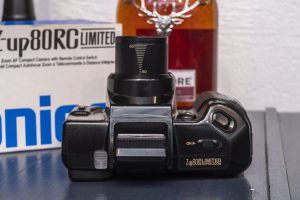
On top, starting from the left is a rectangular finder light window, which allows outside light to illuminate the projected frame lines and focusing circle within the viewfinder. This window is made from a frosted clear plastic which I initially thought might be some kind of flash readiness light or flash mode button, but pressing your finger on it does nothing as it only lets light into the viewfinder.
In the center is the large pop up flash. The flash has a very SLR-like design in it’s shape and how it swings up, much like the in body flash atop most SLR and DSLR pentaprisms do. The flash always pops up when powering the camera on with the power switch to it’s left. Pushing the flash back down acts as the power off switch as doing so, shuts down the camera. You can disable the actual flash using the mode buttons on the back of the camera, but the flash must always remain in the up position when the camera is on.

To the right, other than the power on switch, the only things left to see are the large and oval shaped shutter release button and a gold silk screened logo for the camera. The location and size of the shutter release is very logical and comfortable for your right index finger, unlike the AiBORG whose shutter release button is terribly located and requires a contortion of your index finger to reach. The Konica Z-Up 80RC Limited does not have an option for any sort of threaded cable release, instead relying on the remote control for firing the shutter remotely. The shutter release also doubles as a focus lock which allows you to half press to get the camera to take a focus reading, which it will then hold for as long as you maintain half pressure on the shutter release so that you may recompose your image. When you press the button the rest of the way down, the shutter will fire at whatever distance it originally detected.
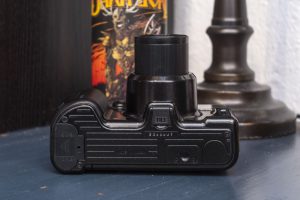
The bottom of the camera has the door for the battery compartment, camera serial number, offset 1/4″ tripod socket, and a curious little tilting kickstand which is used to prop the camera at an upward angle, possibly for table selfies. As curious of a feature this is, it likely was used more often than the tripod socket, whose plastic construction and non-central location suggests it’s inclusion was an afterthought.
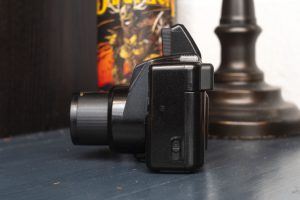
On the sides of the camera are the film door release on the left and wrist strap loop on the right. It was not unusual for point and shoot cameras of this era to only have a strap loop on one side of the camera as neck straps were generally reserved for SLRs or heavier cameras.
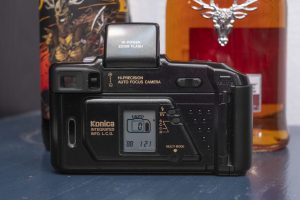
Around back the Konica Z-Up 80RC Limited is a bit busy, but in a way that makes the camera quite a bit more user friendly than that other Konica I keep referring to. In the upper left corner is the rectangular eyepiece for the viewfinder. A sliding diopter adjustment is to the right which helps improve the viewfinder for people with less than perfect vision.
In the center is a large LCD that shows most of the critical information about the camera including shots remaining, flash mode, exposure compensation mode, battery status, date back settings, shooting mode, a film transport indicator, and a couple of other things. Two gray rubber buttons to the right of the LCD are always accessible and are used to toggle flash and exposure compensation modes, and single, continuous, self-timer, and a fourth option for manual rewind.
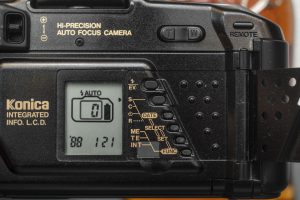
Behind a hinged metal door are four additional smaller buttons, three of which are used for the various date back modes. Like many point and shoot cameras of this era, the date back only goes as far as December 31, 2019, which at the time of the camera’s release would have seemed like a faraway future, but for us today, is the past. The fourth button selects between Multiple Exposure, Timed Exposure, and Intervalometer modes. Each of these functions are also available on the AiBORG, but are in the same menu as other, much more useful modes, so Konica’s decision on this model to tuck them out of the way beneath a metal door was a wise decision as they were likely rarely used.
Above the rear buttons is a left/right toggle switch for controlling the camera’s zoom. I don’t love the location of this button and would have preferred some kind of collar around the shutter release, like those found on modern day DSLRs, but to be fair, that wasn’t a common design feature in 1989 when this camera was released. Finally, in the upper right corner is one of the camera’s two IR receivers for the remote control.
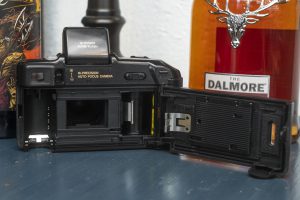
The right hinged film door swings open to reveal a pretty standard film compartment, like you’d expect to see on most automatic point and shoots of the era. Film transport is from left to right onto a quick loading take up spool. Simply extend the leader of a new roll of film to the mark, close the door, and let the camera do the rest.
Also visible are the DX encoding contacts, a toothed wheel for counting exposures, and on the inside of the door, a large and divoted film pressure plate, with various cutouts for the date back feature. The DX mode supports film speeds from 50 to 3200, but defaults to 100 on non-DX coded film. There is no film speed override on the camera.
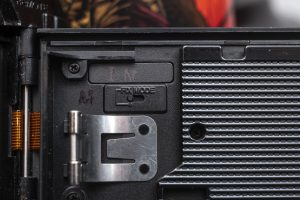
A small slider on the inside of the film door near the hinge is a “Fix Mode” switch. This switch is used to override a safety feature the camera has which automatically resets various shooting modes after each exposure. This is done to prevent accidental exposures in the wrong mode. With this switch in the left position, this automatic reset option is disabled allowing you to stay in whatever shooting mode you’ve manually selected for consecutive exposures. Regardless of the position of this switch however, all shooting modes will reset when powering off the camera.
Finally, like most cameras of the era, there are no foam light seals around the door or hinge to contend with. A small patch around the window for the film cassette is made of foam however, which you should replace if it starts to crumble.
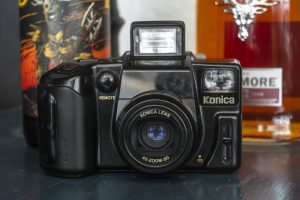
Up front, the Konica Z-Up 80RC Limited has a few interesting things to see. Most prominent is the large popup flash with zoom capability. As you change the focal length of the lens, the front reflector moves forward and back, just like a more advanced speed light would. This feature allows the flash more consistent coverage up close and far away at both 40mm and 80mm. Maximum flash range with 400 speed film is 33 feet.
Above and to the left of the lens is the front IR receiver for the remote control. According to the manual, this front receiver can detect the remote up to 5 meters away, which is much father than the rear one.
One final control below and to the right of the lens is an infinity focus switch which manually sets the range of the lens for landscape images, to override any close up objects the auto focus system might erroneously detect. Although not stated in the manual, this switch is also useful for shooting through glass such as out of an airplane window as that often tricks most auto focus sensors.

The front corner of the right hand grip is also where the detachable remote control is docked. Press in on the lower part of the remote and the top half will pop out, allowing you to completely remove the remote. The remote only has a single purpose which is as a remote shutter release for group shots, or other special circumstances where you need to be away from the camera.
Removing the remote automatically enables the camera’s remote control mode, which is indicated by a red LED that starts flashing inside of the front IR received. This light will flash for 5 minutes, at which time the remote is enabled. If you do not use the remote within 5 minutes, it will quickly blink for an additional 30 seconds, at which point you must press the button on the remote to extend the remote control time, otherwise it will go out and remote control is disabled. Once remote control mode is disabled, you will need to reattach and detach the remote from the camera to enable it again. Attaching the remote back onto the camera, disables remote control mode. The remote itself does not have it’s own battery and is charged by the camera when attached.
At first glance, the Konica Z-Up 80RC Limited’s viewfinder is much like most other point and shoots of it’s era. It is big and easy to see through, even with prescription glasses. Projected frame lines help you to frame your image. The optical viewfinder is coupled to the lens’s focal length, so changing that makes a corresponding change to the viewfinder. A central circle indicates the auto focus spot with a dotted version to it’s right for use at close focus. Illuminated red icons show up indicating whether the flash is to be used, and which of the three zone focus distances (portrait, group, and landscape) are detected.
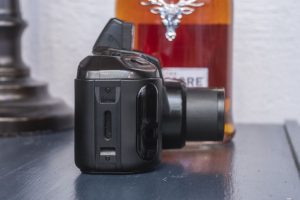
Where this camera’s viewfinder is a bit more advanced than other point and shoots is when shooting things at close focus. When the active IR focus system detects a close object, a red tulip appears with additional parallax corrected frame lines to indicate the proper framing for a shot down to 2 feet. If the camera detects an object closer than 2 feet, the tulip will blink, indicating that the object is too close and it will prevent the shutter from firing. In the second viewfinder image above, the auto focus system has detected the kitchen utensils about 2 feet away.
While not exactly a true macro mode, this close focus capability of the Konica Z-Up 80RC Limited sets it apart from many other point and shoots of the era that are limited to about 3.5 feet or so.
My first impression of the Konica Z-Up 80RC Limited is very positive. Even without loading in a roll of film, I can already see that based on the ergonomics of the camera and its list of features, I already like it better than the Konica AiBORG, but that’s a pretty low bar to clear, so how good is it really? Keep reading…
My Results
It is not often that I get excited to take out a camera in the middle of winter as I find my inspiration is at a yearly low, plus with the gray skies and monochromatic scenery near where I live, I struggle to motivate myself. But with this Konica Z-Up 80RC Limited, I felt strangely inspired, so on a cold January day after a fresh snowfall, I loaded in a roll of semi expired Kodak Plus-X 125 and went shooting.
Impressed with my results from that first roll, I knew I needed to give the Konica another go, but it would take me several months to get the opportunity, but when that came, it was to a trip to Grand Rapids, Michigan in the summer of 2021 to see a monster truck show. For that roll, I chose semi-expired Fuji 200 Color.
I’ve referenced my historic disdain for the Konica AiBORG multiple times in this review, so I should probably waste no more time and get out of the way that although Konica Z-Up 80RC Limited was made in the same general time period as, and shares some similar visual stylings as that camera, the Konica Z-Up 80RC Limited is far and above a better camera.
Even without putting a roll of film in it, the Konica Z-Up 80RC Limited avoids every single one of my biggest criticisms of the AiBORG in that it has a large and easy to use viewfinder, it has good ergonomics that don’t require a contortion of your index finger to fire the shutter or your thumb to access the poorly located directional pad on the back, and although some of the camera’s more obscure modes aren’t the most intuitive to access, they don’t come in the way of features you do want to use.
There are dedicated buttons easily within reach for cycling between Continuous, Single Shot, or Self Timer shooting modes. Another dedicated button cycles between flash modes and an exposure compensation button. There is no 12 step icon based menu with crazy video game or bouncy ball modes to get in the way like on the AiBorg. You can quickly force the camera to infinity mode by sliding a conveniently located switch on the front camera, and with the remote control removed from the camera, firing the shutter from a distance is a snap.

The 8-element Konica Zoom lens produces nice images that are sharp corner to corner. Some vignetting is visible in shots, especially those where the sky is visible, but it doesn’t at all detract from the visual appeal of the images. In fact, considering the problematic design of early zoom lenses, that the Konica Z-Up 80RC Limited doesn’t suffer from more optical maladies is a plus. Sure, a 2x zoom isn’t exactly ground breaking, but that it covers the most commonly used optical lengths of 40mm to 80mm begs the question of how useful superzoom point and shoots really are.
I also really liked the viewfinder. Its location in the upper left corner of the back is a perfect location for left eye shooters like myself. The viewfinder does not have a 1:1 magnification, so shooting with both eyes open wouldn’t be an option for right eye shooters, but I found it to be very enjoyable. The implementation of the light up red parallax frame lines when shooting close-ups is a welcome feature as well.
The Konica Z-Up 80RC Limited is not without it’s faults. Although entirely plastic bodies were the norm by the late 1980s when this camera was released, this was supposed to be a step up from an entry level model, and a few creaks and groans from the camera definitely don’t inspire confidence. I feel as though some combination of a metal and plastic body would have turned this from a “gee-whiz” camera into a homerun camera.
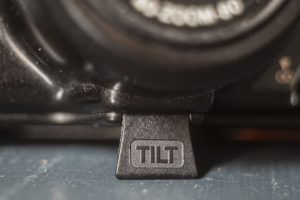
The metering and autofocus systems worked great outdoors and indoors with good lighting, but once the lighting got worse, any kind of moving object not only threw off the focus, but it also did the metering system as most of my shots of the monster trucks I took were both blurry and under exposed. My guess is that the programmed auto exposure system must have erred on the side of underexposure to shorten shutter times in the interest of reducing blur. This of course isn’t totally unexpected of pretty much any other fully automatic camera from 1989 though, but is worth noting that for all the things the Konica Z-Up 80RC Limited does well, it can’t work miracles.
The Konica Z-Up 80RC Limited is a terrific camera, and one that for someone in 1989, would have been an excellent option for someone looking for a well featured and attractive fully automatic point and shoot with a zoom lens. I genuinely enjoyed shooting this camera and definitely see it as one I would come back to again.
Related Posts You Might Enjoy
External Links
http://camera-wiki.org/wiki/Konica_Z-up_80
http://www.collection-appareils.fr/x/html/page_standard.php?id_appareil=10039
http://classicameras.blogspot.com/2008/12/konica-z-up-80-rc.html
https://cameragocamera.com/2018/02/26/konica-z-up-80-super-zoom/
https://austerityphoto.co.uk/konica-z-up-80-poundland-challenge-camera-no-10/
https://www.mobile01.com/topicdetail.php?f=255&t=2888141 (in Chinese)
https://www.analoogfotoforum.nl/index.php?topic=5934.0 (in Dutch)

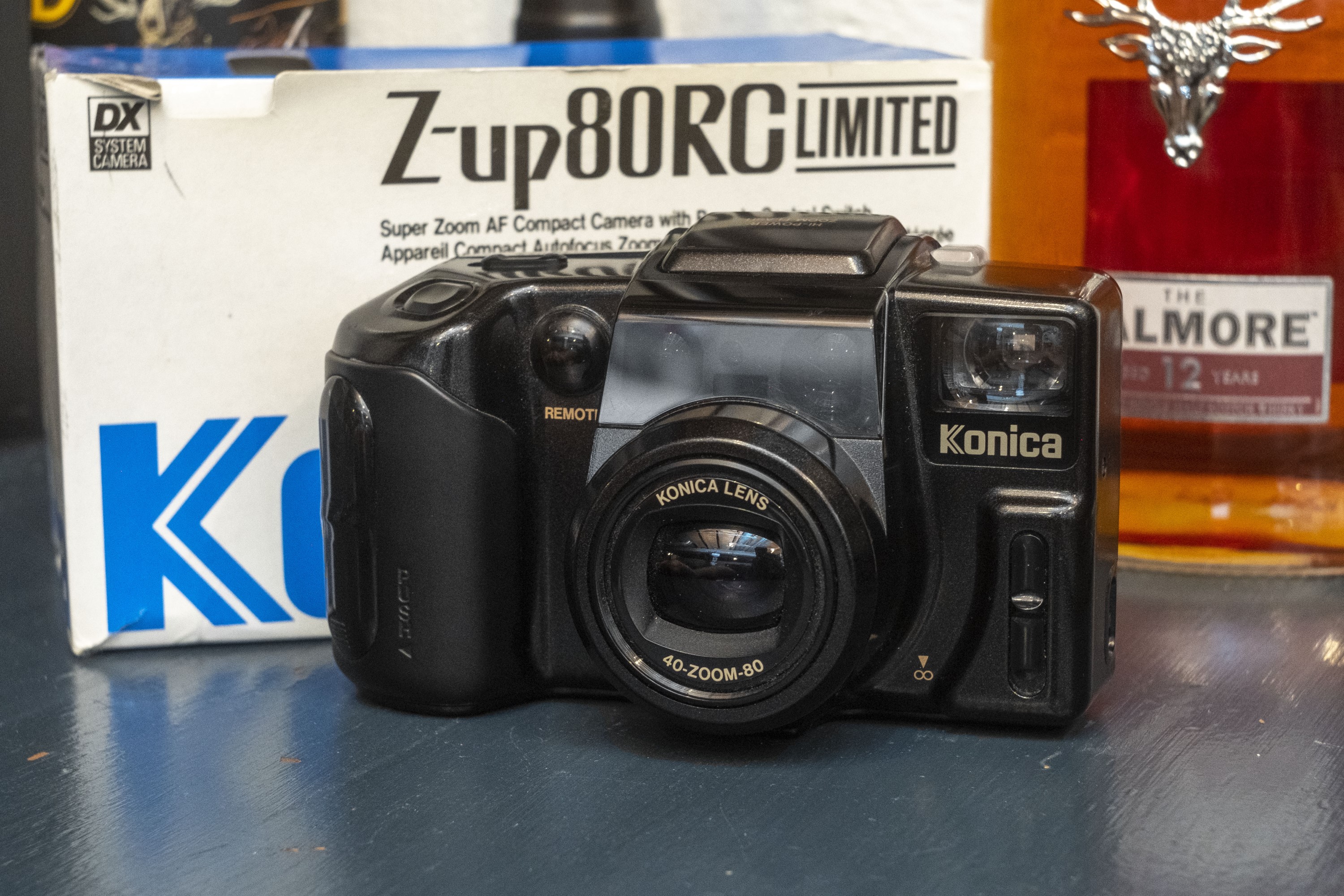
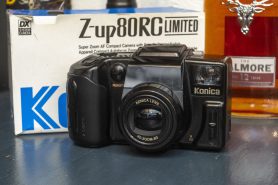
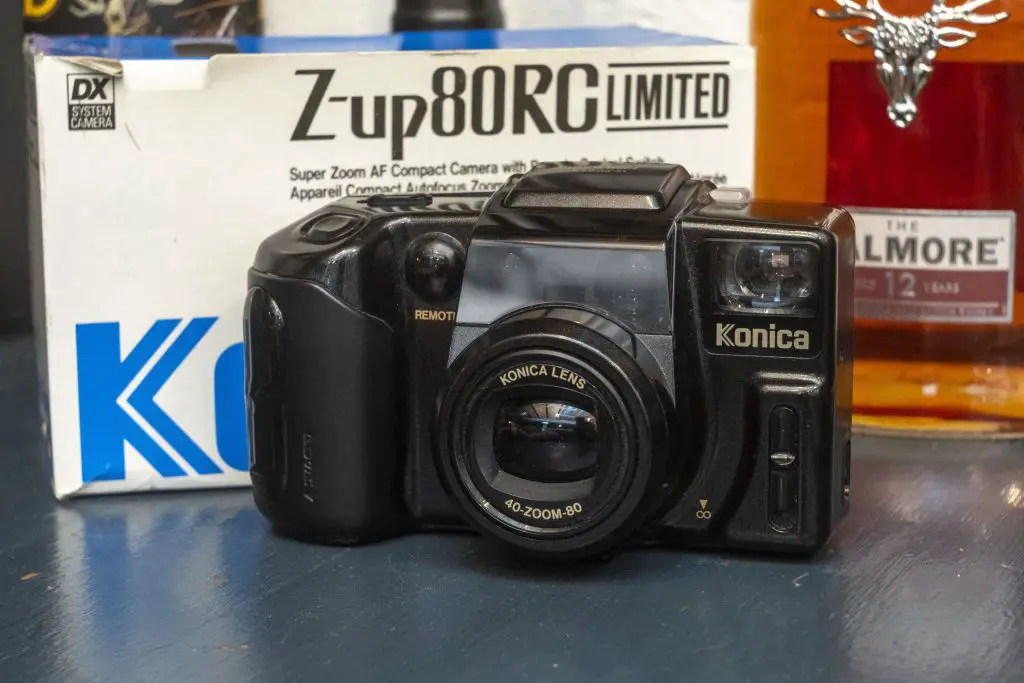

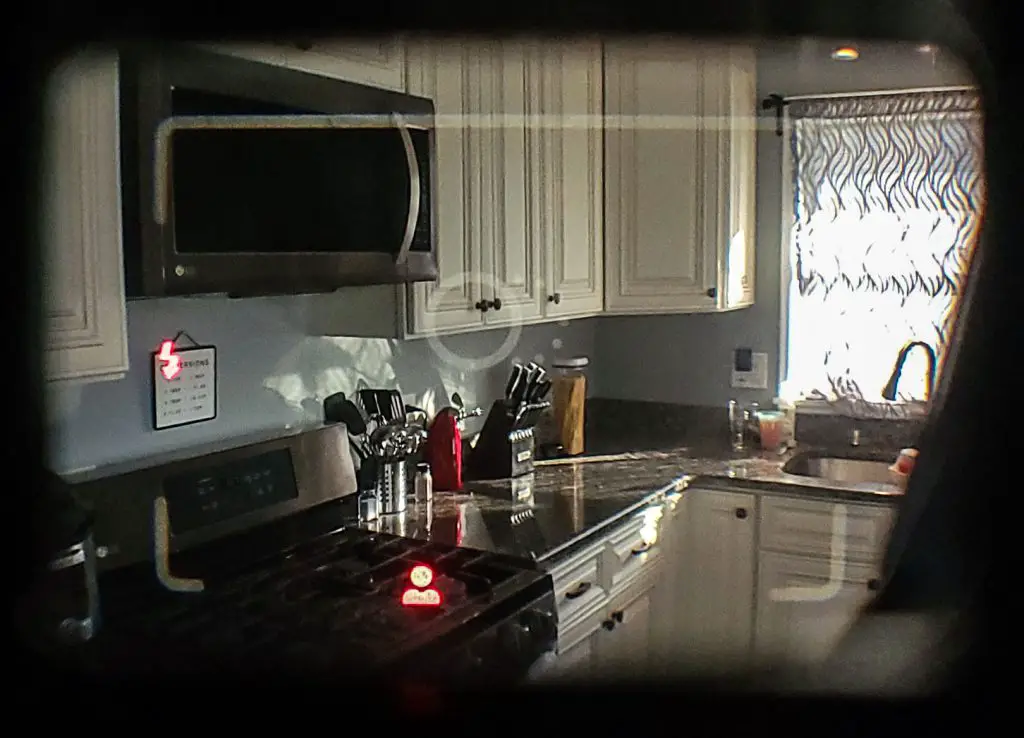
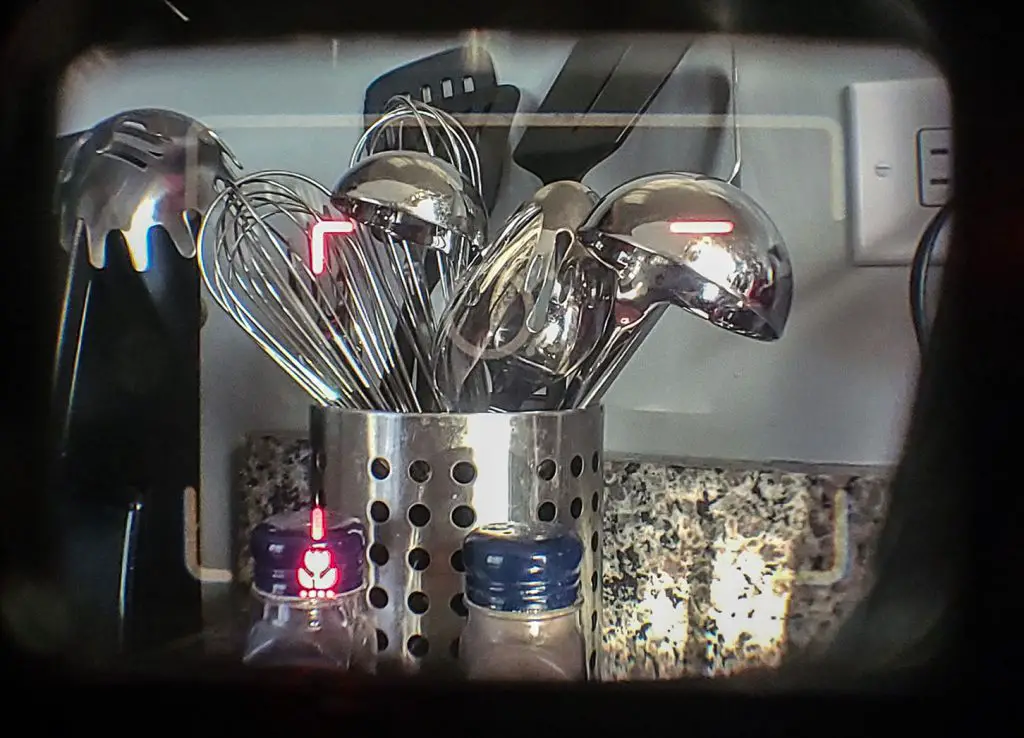
























Thanks, Mike, for finding and reviewing another uncommon – and uncommonly good – camera. This Konica is on par with the Nikon ZoomTouch 800, the world’s heaviest point & shoot camera. It offered multipoint IR focusing and the first ED glass zoom lens on a compact Nikon. And like your Konica, it is also ignored by collectors and shooters: I bought my minty example on The Bay for about $25.
Once again, superb evaluation, great writing, and solid background!I like that 80RC reads BORG if you look at it right. Not a bad camera, from a category I don’t have a lot of affection for- probably based on the mediocre quality of photofinishing I got in those days. I should go back and look at those negatives. Yea, right……